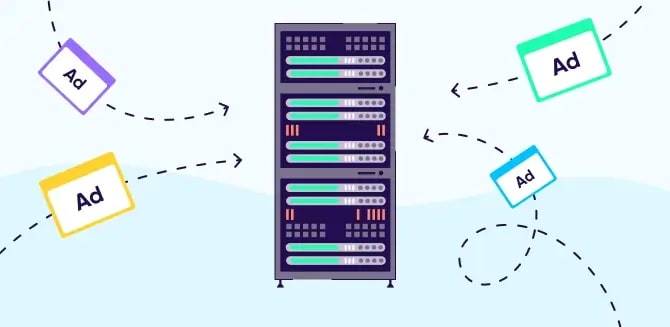What Is A/B Testing? A Practical Guide with 10 Real Examples


A/B testing (also known as split testing) is a method of comparing two versions of a webpage, app, email, or digital asset to determine which one performs better. By randomly splitting traffic between variations (A and B), businesses can measure user behavior and make data-driven decisions.
According to VWO, companies that A/B test regularly see a 10-15% increase in conversions on average. Major platforms like Amazon, Google, and Netflix rely on A/B testing to refine user experiences.
When and Why You Should Conduct A/B Testing
A/B testing is crucial when aiming to make data-driven decisions that enhance user experience and increase conversions. Key reasons to implement A/B testing include:
- Improving ROI from Existing Traffic: Instead of investing in acquiring new traffic, optimize your current traffic by enhancing conversion rates through A/B testing.
- Reducing Bounce Rates: Identify and rectify elements causing visitors to leave your site prematurely.
- Making Low-Risk Modifications: Test minor changes before implementing them on a full scale to mitigate risks.
- Achieving Statistically Significant Improvements: Base decisions on data rather than intuition, ensuring measurable enhancements.
Example: HubSpot increased leads by 24% by testing a single CTA button.
If you're looking to drive measurable improvements in conversion rates, explore my Conversion Rate Optimization Consultancy for expert support.
What Are the Different Types of A/B Tests?
1. Classic A/B Testing
Compares two versions (A vs. B) of a single element (e.g., headline, image).
2. Split URL Testing
Tests two entirely different web pages with separate URLs.
Tests two entirely different web pages with separate URLs.
Optimizes a sequence of pages (e.g., checkout flow).
What Is Multivariate Testing? How Is It Different From A/B Testing?
While A/B testing compares two versions of a single element, multivariate testing examines multiple variables to determine the optimal combination. Multivariate testing requires more traffic to achieve statistical significance due to the increased number of variations.
How Do You Conduct A/B Testing?
Implementing A/B testing involves several key steps:
- Identify Goals: Define what you aim to achieve, such as increasing click-through rates or reducing bounce rates.
- Select Variables to Test: Choose elements like headlines, images, or call-to-action buttons.
- Create Variations: Develop different versions of the selected elements.
- Split Your Audience: Randomly assign visitors to different versions to ensure unbiased results. 50% see Version A, 50% see Version B.
- Run the Test: Allow the test to run for a sufficient period to gather meaningful data.
- Analyze Results: Use statistical analysis to determine which version performs better. If you'd like to get the most out of your experimentation data, check out my Digital Analytics Consultancy
- Implement the Winning Variation: Apply the more effective version to your site or campaign.
A/B Testing Tools
Several tools facilitate A/B testing by providing user-friendly interfaces and robust analytics:
VWO (Visual Website Optimizer)
Offers a comprehensive suite for A/B testing, multivariate testing, heatmaps, and user session recordings. It’s great for optimizing websites and landing pages.
Optimizely
One of the most advanced experimentation platforms, used by enterprise businesses. It supports both web and mobile A/B testing, server-side testing, and personalization
AB Tasty
Focuses on customer experience optimization with a range of A/B testing, personalization, and user insights features. AB Tasty supports both web and mobile testing and provides an intuitive visual editor.
Firebase A/B Testing
Specifically designed for mobile apps, Firebase A/B Testing enables product managers and developers to experiment with app features, UI changes, in-app messaging, and notifications. It is deeply integrated with Firebase Analytics (Google Analytics for Firebase), making it easy to measure results in terms of app engagement, retention, and monetization.
Will A/B testing hurt my SEO?
The short answer is no - if done correctly. Google fully supports A/B testing and has published best practices to ensure that experimentation doesn’t negatively impact your site's organic rankings.
Here’s how to run A/B tests without hurting SEO:
Use 302 (Temporary) Redirects for Split URL Tests
If you’re running a split URL test (where version B lives on a different URL), use a 302 temporary redirect rather than a 301 permanent redirect. This signals to Google that the redirect is temporary and that the original URL should remain in the index.
Don’t Cloak Content
Cloaking is when you show different content to search engines than you show to users — and it’s against Google’s Webmaster Guidelines. During your A/B tests:
- Both versions of your page should be visible to both users and Googlebot.
- Don’t serve special content or markup to Googlebot.
Run Tests for a Reasonable Duration
Google recommends that you limit test duration — long enough to achieve statistical significance, but not so long that search engines might think your variation is the permanent version.
Typical guideline: 2–4 weeks for most A/B tests.
After the test ends, remove test variations and serve only the winning experience.
Avoid Indexing Duplicate Content
If your test pages introduce duplicate content (split URL tests or variant pages), prevent indexation using:
- The noindex meta tag, or
- Use rel="canonical" links pointing to the original page (Google recommends this).
This ensures that search engines don’t get confused about which version to index and rank.
For SEO-safe testing frameworks, explore my SEO Consultancy Services to align experiments with search engine guidelines.
A/B Testing Examples
A/B testing isn’t just a theoretical concept, it’s a proven strategy used by leading companies to drive measurable improvements. Below are detailed, real-world A/B testing examples that demonstrate its impact.
Amazon - Button Color Test (Revenue Boost: 10%)
Test: Amazon experimented with different button colors for their "Buy Now" and "Add to Cart" CTAs.
Result:
- The orange-yellow button outperformed the standard blue one, leading to a 10% increase in revenue.
- Lesson: Small design changes can have a massive impact on conversions.
Booking.com - Urgency Messaging (5% More Conversions)
Test: Booking.com tested adding scarcity messages like “Only 2 rooms left!” vs. no urgency cues.
Result:
- Pages with scarcity triggers saw 5% more bookings.
- Lesson: Psychological triggers increase conversion rates.
Airbnb - Listing Photo Optimization (Bookings Up 2-4%)
Test: Airbnb tested whether professional photos vs. user-uploaded photos affected booking rates.
Result:
- Listings with professional photos saw a 2-4% increase in bookings.
- They later automated professional photography services for hosts.
- Lesson: High-quality visuals build trust and drive engagement.
Barack Obama’s 2012 Campaign - Email Test (Raised $60M More)
Test: The Obama campaign tested different email subject lines and sender names for donation emails.
Result:
- The winning subject line: "Hey" (from Barack Obama) outperformed formal versions.
- Raised $60M+ more than previous campaigns.
- Lesson: Personal, simple messaging can drive action.
Netflix - Personalized Thumbnails (Higher Engagement)
Test: Netflix tested different thumbnail images for the same movie/show to see which attracted more clicks.
Result:
- Personalized thumbnails (based on viewing history) increased click-through rates by 20-30%.
- Example: A user who watches romantic films might see a romantic scene thumbnail, while an action fan sees an explosion shot.
- Lesson: Personalization improves user experience and retention.
Duolingo - Notification Test (Higher User Retention)
Test: Duolingo tested different push notification timings and messages to re-engage users.
Result:
- Notifications with playful, personalized reminders (e.g., “Your Spanish streak is at risk!”) improved daily active users by 10%.
- Lesson: Gamification + personalization boosts retention.
HubSpot - CTA Button Test (24% More Leads)
Test: HubSpot tested a green CTA button vs. a red one on their landing pages.
Result:
- The red button outperformed the green one by 24% in lead generation.
- Lesson: Color psychology plays a role in conversions - red often indicates urgency.
Walmart - Checkout Flow Test (Reduced Cart Abandonment)
Test: Walmart simplified their checkout process by removing unnecessary form fields.
Result:
- A streamlined checkout reduced cart abandonment by 7%.
- Lesson: Reducing friction increases completed purchases.
Google’s "40 Blue Shades" Test (Revenue Impact: $200M+)
Test: Google famously tested 40 shades of blue for their ad link color.
Result:
- A specific shade of blue (#2200CC) increased ad clicks by $200M+ in annual revenue.
- Lesson: Even minor UX tweaks can generate massive financial gains.
Spotify - Free vs. Premium Test (More Upgrades)
Test: Spotify tested different upgrade prompts for free users (e.g., “Limited skips” vs. “Ad-free listening”).
Result:
- Messaging that highlighted exclusive features (like offline listening) increased premium sign-ups by 15%.
- Lesson: Focus on value, not just limitations.
Key Takeaways from A/B Testing Examples:
- Small changes (button color, text, images) can drive large business results.
- Testing UX and UI elements should be an ongoing process, not a one-off project.
- A/B testing is as valuable for nonprofits and political campaigns as it is for global tech giants.
Conclusion
A/B testing is a must for data-driven optimization. Whether you’re improving a website, app, or ad campaign, structured testing leads to better conversions and UX.
Need help with digital analytics and A/B testing? Mahmoud Hesham, an experienced digital analytics consultant, can help you make the most of your results.
Related Posts
The Future of SEO: The State of SEO i...
The digital marketing landscape is undergoing a massive transformation with the emergence of AI-powered search. Google’s Search Generative Experience (SGE), ChatGPT, and Bing Copilot are redefinin...
The Future of Paid Ads in the AI Era
Digital advertising has long been the lifeline for businesses seeking rapid growth, exposure, and increased conversions. From Google Ads to Meta’s advanced audience targeting, paid media has been o...
There are no comments yet.

